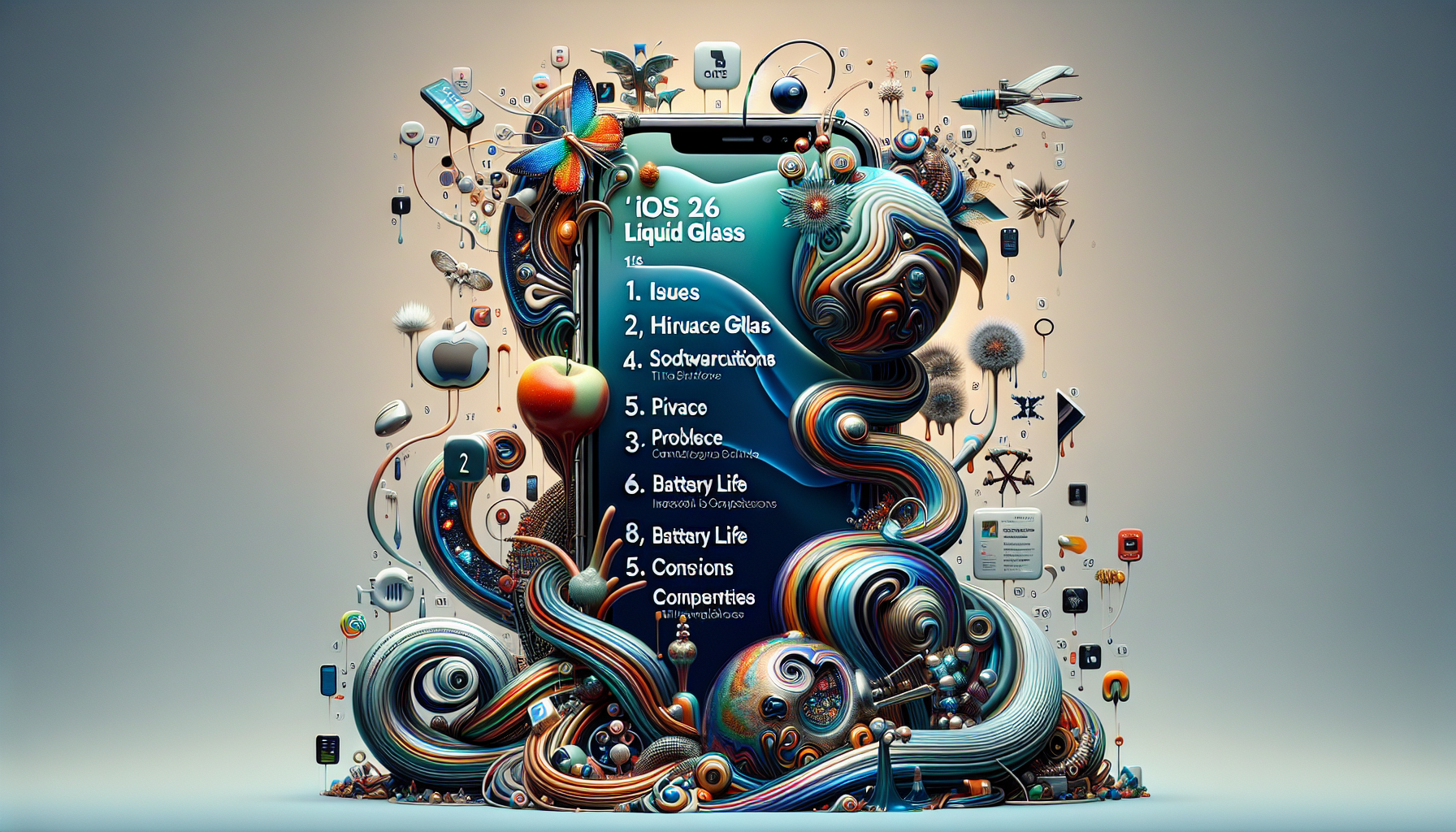Examining iOS 26: Issues with Liquid Glass That Apple Must Tackle
Apple’s iOS 26 unveils the groundbreaking Liquid Glass design, an innovative approach to user interfaces aimed at harmonizing experiences across devices. Although the design is visually impressive, several problems have emerged during the beta stage that Apple needs to resolve prior to the official launch. This article explores these issues and provides insights on possible solutions.
What is Liquid Glass?
Liquid Glass is Apple’s fresh design language for iOS 26, noted for its clarity and fluidity. This design goes beyond mere appearance; it seeks to establish a coherent interface experience across all Apple gadgets, from iPhones to the upcoming AI/AR smart glasses. The design lays the groundwork for Apple’s future, equipping users for a reality where augmented reality is commonplace.
Issues with Transparency
Notifications on the Lock Screen
A key concern with Liquid Glass pertains to notifications on the Lock Screen. The transparency effect, while attractive to the eye, complicates the readability of notifications against bright backgrounds. This presents a considerable challenge for users with visual impairments or those prioritizing legibility over visual design.
Potential Solution: Apple could implement settings to modify the opacity of notifications specifically, improving readability without sacrificing the overall aesthetic.
Control Center Confusion
The Control Center in iOS 26 has been reported as visually overwhelming. The transparency and layering can obscure the distinction between buttons and the background, resulting in a disorganized and puzzling interface.
Potential Solution: Reintroducing a blurred background akin to prior iOS iterations could lessen the sensory overload and enhance interface clarity.
The Music App and Menu Streamlining
While iOS 26 aspires to simplicity by reducing menu space, this has resulted in concealed options that puzzles users. The Music app serves as a prime example, where locating saved music becomes difficult due to the design.
Potential Solution: Apple may need to find a balance between simplicity and functionality, making sure that frequently used features are readily accessible.
App Icon Clarity
The transparency effects in app icons, such as those for Photos and various Apple apps, may appear hazy, resulting in a distorted visual experience that users find unattractive.
Potential Solution: Offering an option to modify transparency specifically for app icons could enhance clarity and user experience.
Battery Life Considerations
The launch of Liquid Glass has sparked worries about its effect on battery life. The ongoing processing required for transparency effects could potentially drain the battery more rapidly than earlier versions.
Potential Solution: Apple might provide an option to disable or lessen transparency effects, enabling users to optimize battery performance based on their preferences.
Conclusion
While the Liquid Glass design of iOS 26 signifies an important advancement in Apple’s interface development, several issues need to be addressed prior to its complete release. By tackling readability, usability, icon clarity, and battery efficiency, Apple can guarantee a successful launch that meets user expectations.
Q&A: Getting to Know iOS 26 and Liquid Glass
Q1: What is the aim of Liquid Glass in iOS 26?
A1: Liquid Glass is designed to deliver a cohesive and transparent interface experience across all Apple devices, preparing users for upcoming technologies such as AI/AR smart glasses.
Q2: How does Liquid Glass influence battery life?
A2: The transparency effects in Liquid Glass may affect battery life due to increased processing requirements, although specific evaluations are necessary to measure this.
Q3: Are users able to modify the transparency settings in iOS 26?
A3: At present, users can reduce transparency across the whole UI, but no specific settings for individual components like notifications or app icons are available.
Q4: What are the primary concerns regarding the Liquid Glass design?
A4: Concerns include notifications that are hard to read, a confusing Control Center, concealed menu options, indistinct app icons, and potential battery life implications.
Q5: Will Apple resolve these concerns before the official launch?
A5: It is anticipated that Apple will address these issues based on user feedback obtained during the beta testing phase to ensure a smooth rollout.